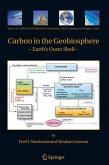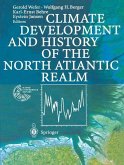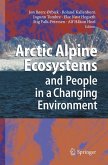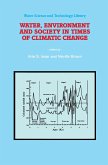Carbon and carbon dioxide always played an important role in the geobiosphere that is part of the Earth's outer shell and surface environment. The book's eleven chapters cover the fundamentals of the biogeochemical behavior of carbon near the Earth's surface, in the atmosphere, minerals, waters, air-sea exchange, and inorganic and biological processes fractionating the carbon isotopes, and its role in the evolution of inorganic and biogenic sediments, ocean water, the coupling to nutrient nitrogen and phosphorus cycles, and the future of the carbon cycle in the Anthropocene.
This book is mainly a reference text for Earth and environmental scientists; it presents an overview of the origins and behavior of the carbon cycle and atmospheric carbon dioxide, and the human effects on them. The book can also be used for a one-semester course at an intermediate to advanced level addressing the behavior of the carbon and related cycles.
This book is mainly a reference text for Earth and environmental scientists; it presents an overview of the origins and behavior of the carbon cycle and atmospheric carbon dioxide, and the human effects on them. The book can also be used for a one-semester course at an intermediate to advanced level addressing the behavior of the carbon and related cycles.
From the reviews:
"Mackenzie and Lerman's book is the culmination of two splendid careers dedicated to understanding the carbon cycle. It's everything you always wanted to know about carbon biogeochemistry past, present, and future." Lee R. Kump, Dept. of Geosciences, Pennsylvania State University, USA
"Majestic in scope; this text builds from fundamentals to front-line research, showing the pivotal role of the carbon cycle in earth system science." Rob Raiswell, University of Leeds, UK
"Using skills honed from decades of leadership in the field, Mackenzie and Lerman ably guide us along the pathways of carbon cycling in Earth's outer layers. This is an essential journey for anyone interested in the origin and evolution of life and its fate under human influence." Tim Lyons, University of California, Riverside, USA
"This text is one in a series of books from Springer on 'Topics in Geobiology'-the broad discipline that covers the history of life on Earth. ... aimed at upper-undergraduate or graduate level, this book is a contemporary appraisal of knowledge on the global carbon cycle and should become the standard reference manual for all those involved in the fight against climate change. It is difficult to think of a more important book for one of the greatest issues facing humanity in the 21st century." Dr. Jeffrey P. Obbard, Journal of Environmental Quality, Vol. 35 (5), 2007
"Research and other professional groups concerned with Earth's carbon budget will welcome this nearly encyclopedic review by two experienced, widely respected geochemists. The depth of the discussion is highly professional, grounded in more than 700 bibliographic references. Recommended. Upper-division undergraduates through faculty." T. R. Blackburn, CHOICE, Vol. 44 (10), 2007
"This isan excellent and up-to-date source information on the stated Carbon in the Geobiosphere. It is well produced and carefully edited" J.W. Morse, Department of Oceanography, Texas A&M University, USA, Aquatic Geochemistry, Vol. 13, 2007
"Mackenzie & Lerman ... book is a good reference for many questions on the carbon geochemistry. Eleven chapters examine a number of aspects of carbon geochemistry, namely its complete cycle, fractionation and anthropogenic impact. All chapters present numerous and various information. ... The book is ended with a good subject index. Illustrations in this book are numerous and all are helpful." (Zentralblatt für Geologie und Paläontologie Teil II, Vol. 3-4, 2007)
"Mackenzie and Lerman's book is the culmination of two splendid careers dedicated to understanding the carbon cycle. It's everything you always wanted to know about carbon biogeochemistry past, present, and future." Lee R. Kump, Dept. of Geosciences, Pennsylvania State University, USA
"Majestic in scope; this text builds from fundamentals to front-line research, showing the pivotal role of the carbon cycle in earth system science." Rob Raiswell, University of Leeds, UK
"Using skills honed from decades of leadership in the field, Mackenzie and Lerman ably guide us along the pathways of carbon cycling in Earth's outer layers. This is an essential journey for anyone interested in the origin and evolution of life and its fate under human influence." Tim Lyons, University of California, Riverside, USA
"This text is one in a series of books from Springer on 'Topics in Geobiology'-the broad discipline that covers the history of life on Earth. ... aimed at upper-undergraduate or graduate level, this book is a contemporary appraisal of knowledge on the global carbon cycle and should become the standard reference manual for all those involved in the fight against climate change. It is difficult to think of a more important book for one of the greatest issues facing humanity in the 21st century." Dr. Jeffrey P. Obbard, Journal of Environmental Quality, Vol. 35 (5), 2007
"Research and other professional groups concerned with Earth's carbon budget will welcome this nearly encyclopedic review by two experienced, widely respected geochemists. The depth of the discussion is highly professional, grounded in more than 700 bibliographic references. Recommended. Upper-division undergraduates through faculty." T. R. Blackburn, CHOICE, Vol. 44 (10), 2007
"This isan excellent and up-to-date source information on the stated Carbon in the Geobiosphere. It is well produced and carefully edited" J.W. Morse, Department of Oceanography, Texas A&M University, USA, Aquatic Geochemistry, Vol. 13, 2007
"Mackenzie & Lerman ... book is a good reference for many questions on the carbon geochemistry. Eleven chapters examine a number of aspects of carbon geochemistry, namely its complete cycle, fractionation and anthropogenic impact. All chapters present numerous and various information. ... The book is ended with a good subject index. Illustrations in this book are numerous and all are helpful." (Zentralblatt für Geologie und Paläontologie Teil II, Vol. 3-4, 2007)








